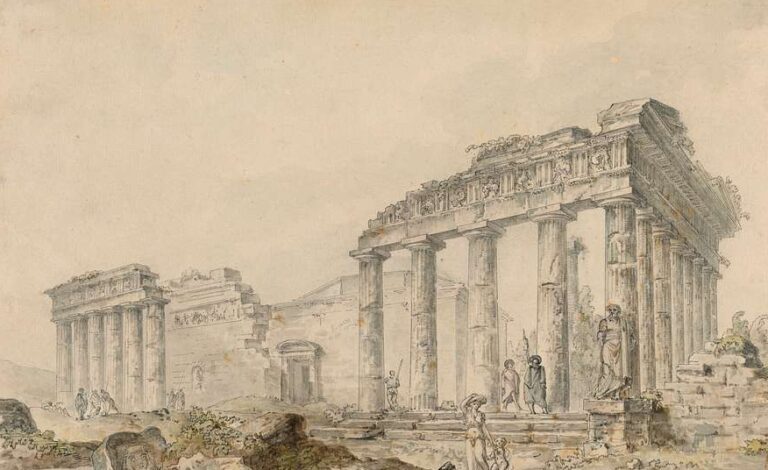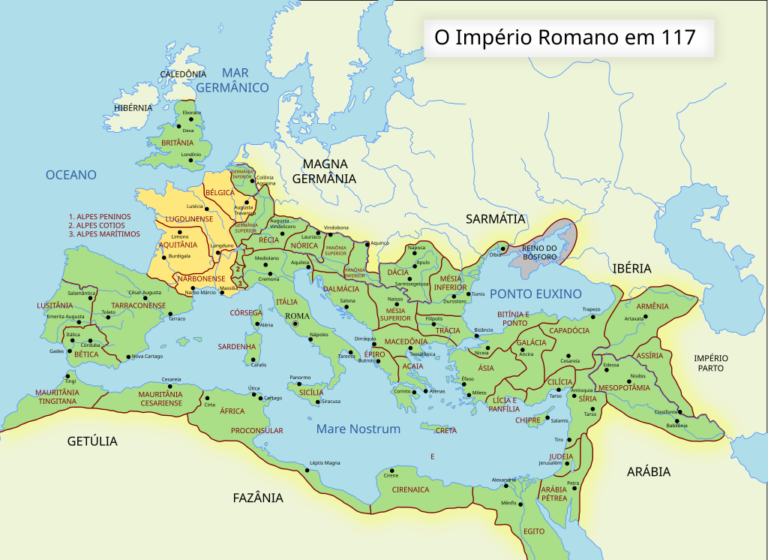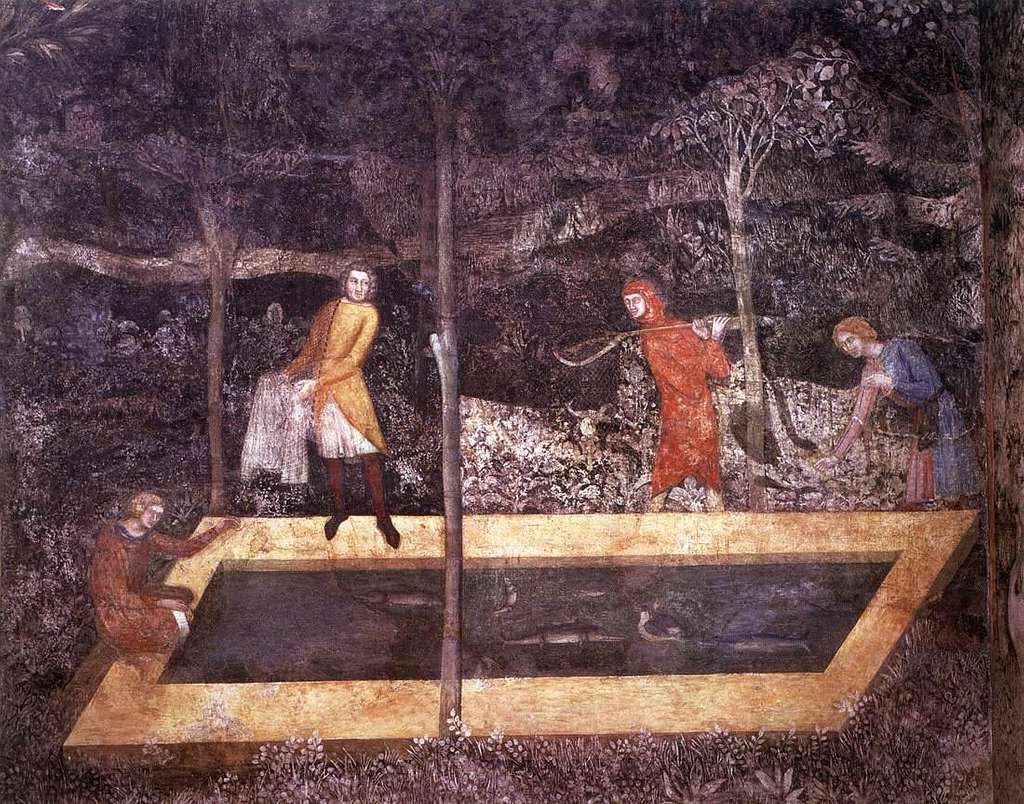
Throughout history, some monarchs and other political leaders have stood out as early champions of environmental protection. Monarchs who protected the environment recognized the vital role nature plays in supporting their people and implemented policies to conserve forests, safeguard wildlife, and ensure sustainable practices. Alongside tribal leaders, emperors, and early presidents, they laid the groundwork for what we now recognize as environmental stewardship, demonstrating a timeless commitment to balancing human progress with the health of the natural world.
Asian Monarchs Who Protected the Environment

Ashoka the Great (Mauryan Empire, India, 268–232 BCE)
- Issued pedicts promoting environmental ethics, animal welfare, and forest conservation.
- Banned animal sacrifices and hunting in certain areas.
- Cruelty to domestic and wild animals was prohibited.
- Established protected zones for wildlife and medicinal plants.
Emperor Akbar (Mughal Empire, 1542–1605)
- Akbar established hunting reserves (often known as “Shikar” reserves) where wildlife could thrive without the threat of overhunting.
- Advocated for harmony between agriculture and the natural environment.
- Invested heavily in large-scale water management projects, establishing irrigation systems and canals.
Sultan Mehmed II (Ottoman Empire, 1432–1481)
- Prioritized the Ottoman navy’s expansion, requiring significant amounts of timber for shipbuilding. To ensure a steady supply, the state managed forests meticulously and implemented laws to protect them from overexploitation.
- Issued decrees to regulate hunting in Ottoman territories.
- Integrated gardens into urban planning. His reconstruction of Constantinople (Istanbul) after its conquest included the creation of royal gardens and the preservation of natural spaces within the city..
Sultan Suleiman the Magnificent (Ottoman Empire, 1494–1566)
- Suleiman was deeply influenced by Islamic principles, which include a strong emphasis on stewardship of the earth. The Quran and Hadiths (sayings of the Prophet Muhammad) promote the protection of natural resources, respect for animals, and the preservation of the environment.
- Enforced laws to protect forests and regulate hunting across the Ottoman Empire.
- Encouraged water conservation and sustainable agricultural practices.
Genghis Khan (Mongol Empire, 1162–1227)
- Implemented strict hunting laws, including seasonal bans to prevent overhunting.
- Left vast tracts of land untouched, allowing ecosystems to recover during Mongol expansion.
- The only historic figure who introduced man-made global cooling.
- According to some studies, re-growth of forests during the Mongol invasion absorbed 700 million tons of carbon from the atmosphere (about a year’s worth of carbon emissions today).
Emperor Qianlong (Qing Dynasty, China, 1711–1799)
- Chinese environmental ethics (Confucianism and Daoism), which emphasize harmony with nature, played an important role in Qianlong’s policies. As a Confucian scholar, Qianlong upheld the moral duty of rulers to protect the land and ensure that nature’s resources were used sustainably for the benefit of future generations.
- Qianlong declared large areas as protected hunting grounds and banned deforestation in key regions.
- Advocated for sustainable agricultural practices to prevent soil erosion and overuse of farmland.
Tokugawa Tsunayoshi (1646–1709)
- Promoted a culture of respect for nature, integrating moral and spiritual values into environmental care.
- Issued the famous Edicts on Compassion for Living Beings (Shōrui Awaremi no Rei), which included protections for wildlife and the prohibition of unnecessary killing of animals.
- The highest number of edicts issued by Tsunayoshi, forty in total, were dedicated to the protection of birds, followed by 33 for dogs and cats, and 17 for horses.
- Tokugawa Tsunayoshi became known as the Dog Shōgun due to these edicts, which are considered to be among the first legal measures for animal protection in the world.
- He helped establish facilities for dogs in the Ōkubo, Yotsuya, and Nakano districts of Tokyo, with the facility in Nakano being particularly large, covering 100 hectares of land.
Tokugawa Yoshimune (1684–1751)
- Implemented strict afforestation programs to address deforestation caused by urbanization and increased demand for timber.
- Encouraged the planting of fast-growing trees such as cedar and pine to replenish forests.
- Advocated for agricultural reforms that promoted efficient land use and reduced the strain on natural ecosystems.
Tokugawa Nariaki (1800–1860)
- Advocated for sustainable agricultural practices to reduce the pressure on natural resources.
- Promoted localized forest management and reforestation efforts within his domain in Mito.
King Jigme Singye Wangchuck (Bhutan, 1955–Present)
- King Jigme Singye Wangchuck is credited with introducing the concept of Gross National Happiness (GNH), which prioritizes the well-being of the people over economic growth alone. One of the four pillars of GNH is environmental sustainability.
- During his reign, Bhutan passed laws to protect its forests. The government committed to maintaining at least 60% of Bhutan’s land area under forest cover at all times.
- His efforts helped Bhutan become the first country in the world to declare itself carbon neutral, a status it has maintained by offsetting its carbon emissions through its expansive forests, which serve as carbon sinks.
- Encouraged the shift towards organic farming, and Bhutan is now recognized as a leader in this movement.
King Chulalongkorn (Rama V) of Thailand (1853–1910)
- Promoted the establishment of forest reserves and banned large-scale deforestation in key regions.
- The Royal Forest Department was established in 1896 during his reign to manage forest resources
- Introduced sustainable water management systems for agriculture.
European Monarchs Who Protected the Environment
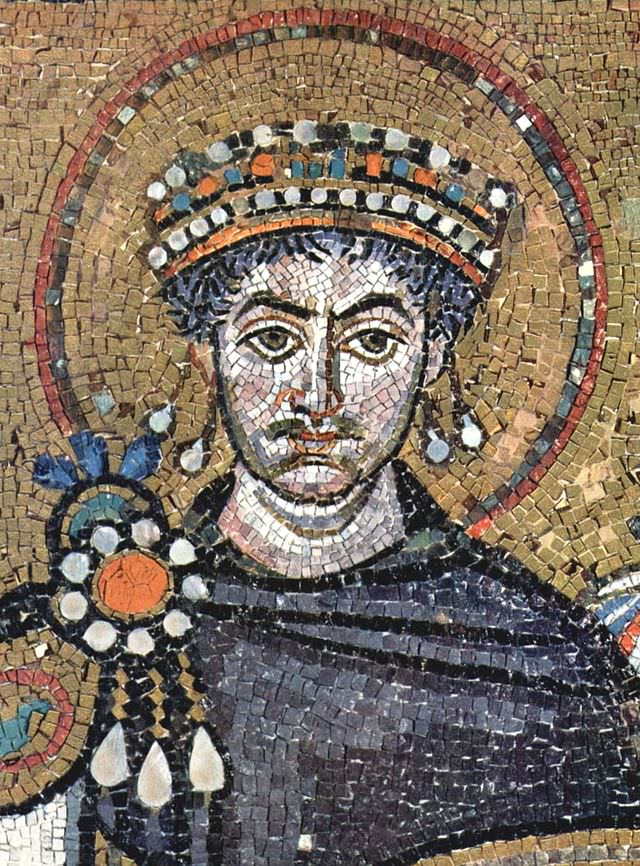
Emperor Justinian I (Byzantine Empire, 482–565)
- Took significant steps to ensure a reliable water supply for his cities, most notably Constantinople. He oversaw the repair and construction of aqueducts, reservoirs, and cisterns, which were vital for urban water management.
- Justinian’s legal code, the Corpus Juris Civilis, included provisions aimed at regulating the use of arable land, preventing the over-exploitation of soil, and ensuring that lands were used in a way that could sustain long-term productivity.
- Encouraged the sustainable use of water for irrigation.
- The Byzantine Empire, under Justinian’s reign, focused on using local materials and incorporating advanced engineering techniques that helped ensure the longevity and stability of structures, reducing the need for constant rebuilding and resource depletion.
Charlemagne (Frankish Empire, 742–814 CE)
- Initiated forest management practices to maintain timber supplies.
- Instituted laws to regulate hunting and protect certain animals and forests.
- Charlemagne supported the establishment of monasteries, many of which played a role in preserving agricultural knowledge, promoting sustainable farming practices, and developing botanical gardens.
- His legal codes, known as capitularies, included some rules that sought to protect communal lands, regulate hunting and fishing, and establish rules about the management of forests and agricultural resources.
King Canute the Great (England, Denmark, Norway, 990–1035)
- During Canute’s reign, the management of fishing rights and river resources became important, particularly in his kingdom of England.
- Drafted the first forest-conservation legislation in England. His 34 Forest Laws were designed to protect forests and their wildlife at all costs, imposing severe penalties on those who violated them.
- Implemented restrictions on hunting to preserve resources for future generations.
- Canute is known to have passed laws regarding the use of common lands, which were shared by communities for grazing animals, collecting firewood, and other needs.
King Philip IV of France (1268–1314)
- Introduced strict forest management laws, limiting deforestation and regulating timber usage.
- In 1291, King Philippe IV established an Administration for water and forests.
- Protected royal forests for both conservation and hunting purposes.
- Promulgated the country’s first fisheries ordinance.
King Louis XIV of France (1638–1715)
- Introduced France’s first comprehensive forest management code, the The Forestry Ordinance of 1669 (“sur le fait des Eaux et Forêts”). The Forest Code was established to ensure sustainable management of the royal forests, which were vital for timber, firewood, and hunting. It imposed regulations on the cutting of trees, aimed at preventing over-exploitation and preserving these crucial resources..
- Implemented reforestation programs and regulated timber usage for shipbuilding.
- Louis XIV’s reign saw the development of extensive canal systems and improvements to the management of France’s waterways. The king established a department specifically responsible for overseeing water resources, including the construction of canals for transportation and irrigation. The Canal du Midi, a major waterway that connected the Atlantic Ocean to the Mediterranean Sea, was completed during his reign.
Americas
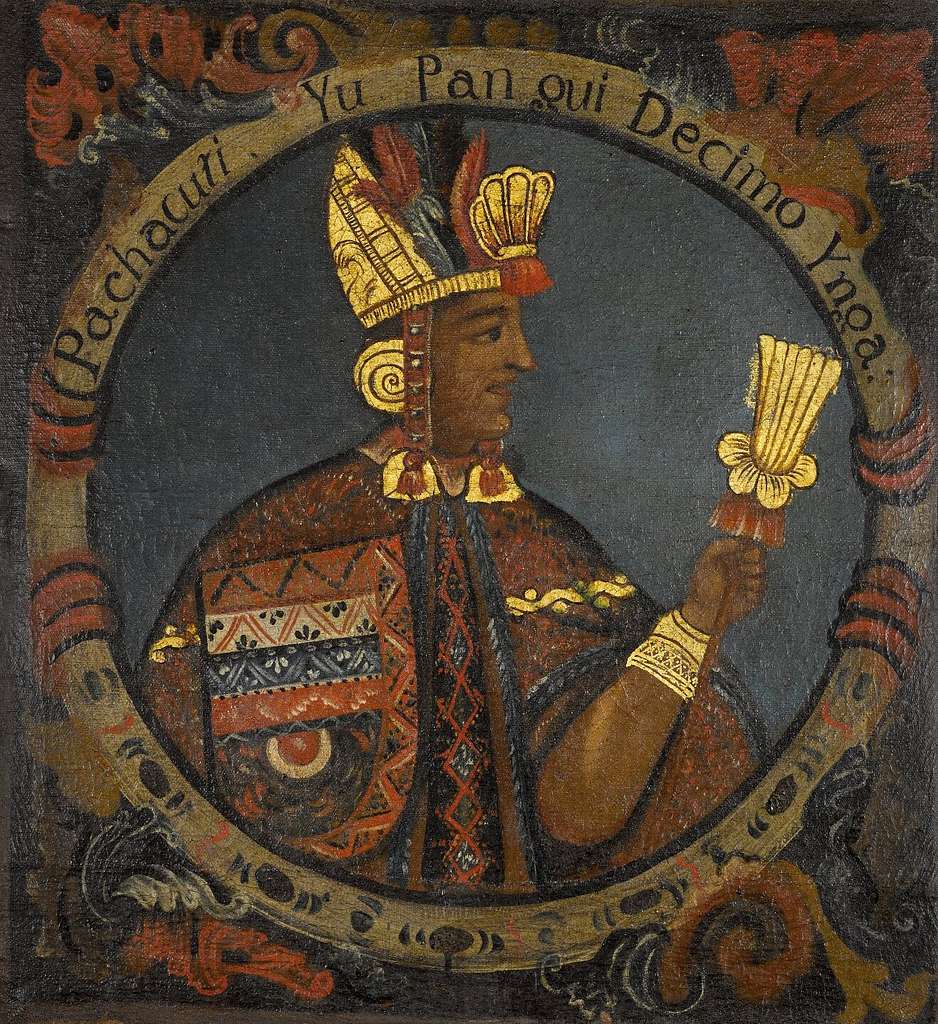
Pachacuti (Inca Empire, 1418–1471)
- Pachacuti is often credited with expanding and refining the practice of terrace farming in the Andean mountains. This method involved carving terraces into steep mountainsides to create flat, arable land. These terraces helped prevent soil erosion, increase agricultural productivity, and maintain soil fertility.
- Pachacuti’s reign saw significant developments in the Inca’s sophisticated irrigation systems. These systems included canals, aqueducts, and reservoirs that helped manage water resources efficiently.
- He promoted the idea that the land was imbued with spiritual significance, and this belief often led to practices that indirectly protected the environment.
- Supported a sustainable herding of llamas and alpacas, which were essential to the Inca economy.
Chief Seattle (Suquamish and Duwamish Tribes, 1786–1866)
- Advocated for a spiritual and symbiotic relationship with nature. His most famous speech, delivered in 1854, encapsulated his belief that the Earth is sacred and that humans are stewards of the land rather than its owners. He spoke about the interconnectedness of all living things, emphasizing that the land, water, animals, and humans are part of one unified whole.
- Chief Seattle’s tribes relied heavily on hunting, fishing, and gathering for sustenance. They followed practices that ensured the sustainability of these resources, such as hunting only what was needed and fishing during appropriate seasons.
Chief Joseph (Nez Perce Tribe, 1840–1904)
- Opposed industrial encroachment on indigenous lands.
- Advocated for protecting natural habitats essential for his people’s survival.
President Theodore Roosevelt (United States, 1901–1909)
- Created 5 national parks, 18 national monuments, and 150 national forests, conserving over 230 million acres.
- Established the U.S. Forest Service, which was tasked with managing national forests and implementing sustainable forestry practices.
- Roosevelt used the Antiquities Act of 1906 to establish national monuments, protecting important sites and landmarks. He used this law to designate over 18 national monuments, including the Grand Canyon (1908), Devil’s Tower (1906), and Muir Woods (1908).
- Roosevelt was instrumental in expanding the National Wildlife Refuge System, which was originally established in 1903 with the creation of the Pelican Island National Wildlife Refuge in Florida.
Africa
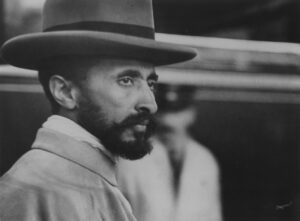
King Sobhuza II (Swaziland, 1899–1982)
- Designated Hlane Royal National Park and other conservation areas.
- Promoted sustainable land use and protection of biodiversity in Swaziland (Eswatini).
King Menelik II of Ethiopia (1844–1913)
- Encouraged afforestation and water conservation to combat soil degradation and desertification in Ethiopia.
- Promoted sustainable farming techniques.
Haile Selassie (Ethiopia, 1892–1975)
- Established protected areas and national parks like Simien Mountains National Park.
- Encouraged afforestation and soil conservation projects.
Bibliography:
1. “Ashoka: The Search for India’s Lost Emperor”
Author: Charles Allen
Publisher: Hachette Digital
Year: 2012
2. “India’s Wildlife History: An Introduction”
Author: Mahesh Rangarajan
Publisher: Permanent Black
Year: 2001
3. “The Royal Hunt in Eurasian History”
Author: Thomas T. Allsen
Publisher: University of Pennsylvania Press
Year: 2006
4. “The Great Work: Our Way into the Future”
Author: Thomas Berry
Publisher: Harmony/Bell Tower
Year: 1999
5. “Encyclopedia of South American History”
Author: Ondrej Fiser
Publisher: Independently Published via Amazon
Year: 2024
Other related articles:


